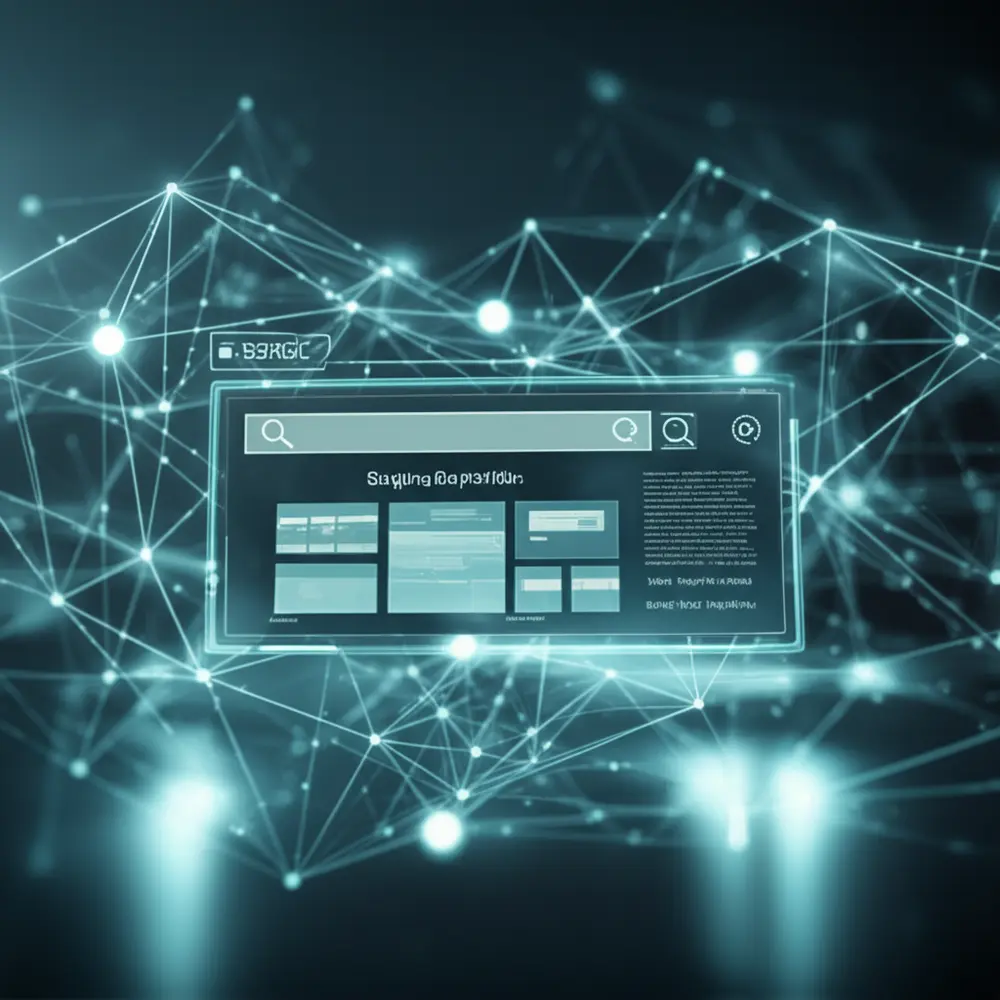The modern digital supply chain challenge represents a significant paradigm shift for your global operations. You must now navigate an increasingly complex, interconnected ecosystem where traditional methodologies often fall short.
This evolving landscape demands foresight and adaptable strategies from every operations manager, supply chain leader, and business executive. You face continuous pressure to integrate advanced digital tools into your daily processes.
Therefore, understanding these profound changes and proactively addressing systemic issues is crucial for maintaining your competitive advantage and strategic stability. You must master this challenge.
Conquering the Evolving Digital Landscape
The rapid pace of technological innovation fundamentally reshapes your supply chain operations. You face continuous pressure to integrate advanced digital tools, from AI and IoT to blockchain, merely to maintain competitive parity. This requires substantial investment and a clear vision for digital transformation.
Furthermore, these advancements introduce unprecedented levels of complexity into your daily work. You manage vast data streams, ensure system interoperability, and upskill your teams, all part of the daily digital supply chain challenge. You must foster agility to respond effectively to these dynamic forces.
You gain a powerful edge by embracing these technologies strategically. You transform your supply chain from a cost center into a strategic asset, driving growth. This proactive approach distinguishes market leaders from followers in this new era.
AI-Driven Automation vs. Manual Processing: A Strategic Advantage
You understand that automating tasks frees your team for higher-value activities. Artificial Intelligence (AI) excels at repetitive data processing, demand forecasting, and inventory optimization. It minimizes human error, accelerating your entire operational cycle.
Manual processing, conversely, is prone to errors and takes valuable time away from strategic initiatives. You experience bottlenecks and delays when relying on traditional methods. Embracing AI gives you a significant edge in speed and accuracy.
**Case Study: AgriConnect Foods**
AgriConnect Foods, a national food distributor, implemented an AI-driven demand forecasting system. This reduced their inventory holding costs by 18% and improved order fulfillment accuracy by 15%. They now prevent overstocking and reduce food waste, saving an estimated $750,000 annually.
Navigating Operational Complexities with Precision
Digitalization profoundly impacts your day-to-day operations. Enhanced visibility across your supply chain, while beneficial, also reveals intricate dependencies and potential bottlenecks that were previously obscure. You, therefore, require a granular understanding of digital processes.
Moreover, the sheer volume of data generated by digital systems can be overwhelming. Extracting actionable insights from this torrent of information is a core operational challenge. You must invest in robust analytics capabilities to leverage this data strategically.
Industry reports suggest that 30% of supply chain costs stem directly from operational inefficiencies. By implementing real-time data analytics, you can reduce this by at least 10%. For a company with a $10 million operational budget, this translates to $300,000 in annual savings ($10M * 0.30 * 0.10).
Centralized Data Platforms vs. Disparate Systems: Your Control Point
You struggle when your data resides in disconnected silos, hindering a holistic view of operations. A centralized data platform integrates information from all your systems. This gives you a single source of truth for critical decision-making.
Disparate systems create information gaps, forcing manual data reconciliation and increasing the risk of errors. You waste valuable time piecing together reports instead of analyzing trends. Centralizing your data provides seamless visibility and control.
**Case Study: Global Logistics Hub**
Global Logistics Hub, a freight forwarding company, integrated all its operational data into a single cloud-based platform. This improved its real-time tracking capabilities, reducing shipment delays by 12% and cutting administrative costs by 8%. You achieved a 7% increase in customer satisfaction.
Strengthening Risk Management Against Digital Threats
The digital supply chain inherently introduces new vulnerabilities, necessitating a robust approach to risk management. Cyber threats, data breaches, and system failures pose significant dangers to your continuity and reputation. Proactive security measures are paramount for your business.
Geopolitical instability and unexpected disruptions further compound the digital supply chain challenge. Therefore, building resilience through diversified sourcing, predictive analytics, and flexible logistics networks becomes critical for mitigating potential impacts. You must anticipate the unforeseen.
You understand that a single cyber attack can cost your company millions and severely damage trust. The average cost of a data breach globally reached $4.45 million in 2023, according to IBM. You cannot afford to overlook robust cybersecurity protocols.
Data Encryption vs. Basic Firewalls: Your Security Imperative
You know that basic firewalls offer only a perimeter defense, which is often insufficient against sophisticated cyber threats. Implementing end-to-end data encryption protects your sensitive information even if breached. You safeguard your intellectual property and customer data.
Without robust encryption, your data remains vulnerable to insider threats and advanced persistent threats (APTs). You expose your company to significant legal and financial repercussions. Encryption is a non-negotiable layer of protection in your digital strategy.
**Essential Features for Data Security:**
* **End-to-end encryption:** Encrypts data in transit and at rest.
* **Multi-factor authentication (MFA):** Adds layers of security to access points.
* **Access controls:** Limits data access based on roles and permissions.
* **Regular security audits:** Identifies and patches vulnerabilities proactively.
* **Intrusion detection systems:** Monitors for suspicious activity in real-time.
**Addressing LGPD (GDPR) Compliance:**
You must understand the relevance of data protection laws like LGPD (Brazil) or GDPR (Europe), which mandate strict rules for handling personal data. You are responsible for ensuring your digital supply chain solutions comply with these regulations. This involves transparent data collection, explicit consent, and robust data breach response plans. Non-compliance can lead to severe penalties, impacting your bottom line and reputation. You must protect your customers’ privacy.
**Case Study: SecureLink Logistics**
SecureLink Logistics implemented a comprehensive cybersecurity framework, including advanced encryption and multi-factor authentication across all digital platforms. This reduced their risk of data breaches by 25% and increased client confidence, leading to a 10% growth in high-security contracts. They fortified their operations against digital threats.
Crafting a Future-Proof Technology Strategy
Developing a coherent technology strategy is no longer optional; it is fundamental to overcoming modern supply chain hurdles. This involves carefully selecting and integrating solutions that align with your business objectives and enhance overall efficiency. You must avoid siloed systems.
You must assess your readiness for emerging technologies and plan their adoption thoughtfully. A well-defined technology strategy ensures that digital investments translate into tangible improvements in performance and competitive advantage. You lead your company forward with clear vision.
You recognize that a piecemeal approach to technology adoption leads to integration nightmares and wasted resources. Instead, you design a holistic roadmap. This ensures every new tool supports your overarching strategic goals.
Cloud-Native Solutions vs. On-Premise Servers: Your Scalability Choice
You face the decision between the flexibility of cloud-native solutions and the traditional control of on-premise servers. Cloud solutions offer unparalleled scalability, allowing you to adapt quickly to fluctuating demand. You pay only for the resources you use.
On-premise servers require significant upfront investment and ongoing maintenance, limiting your agility. You bear the full burden of hardware upgrades and security. Cloud-native solutions empower you with dynamic scaling and reduced operational overhead.
**Case Study: FutureFlow Manufacturing**
FutureFlow Manufacturing migrated its entire production planning and inventory management to a cloud-native platform. This allowed them to scale operations rapidly during peak seasons, reducing infrastructure costs by 20% and improving production cycle times by 15%. They achieved greater market responsiveness.
Achieving Seamless Integration Across Your Ecosystem
A crucial aspect of the digital supply chain challenge is achieving seamless integration across disparate systems and partners. Many organizations struggle with legacy infrastructure that hinders real-time data exchange and collaborative efforts. Open communication channels are vital for your success.
Successful integration extends beyond internal systems to include your suppliers, logistics providers, and customers. Establishing a truly connected ecosystem allows for greater transparency, faster decision-making, and a more responsive supply chain. You connect every dot.
You know that fragmented systems lead to delays, errors, and frustrated customers. When your planning, execution, and communication tools are not integrated, you lose efficiency. A unified approach streamlines your entire workflow.
**Step-by-Step for Integration Success:**
1. **Map Current Systems:** Document all existing technologies and their data flows.
2. **Identify Integration Points:** Pinpoint where data exchange is critical but lacking.
3. **Prioritize API-Led Connectivity:** Use Application Programming Interfaces (APIs) for flexible connections.
4. **Implement a Centralized Integration Platform:** Use middleware or iPaaS (integration Platform as a Service) to manage connections.
5. **Test and Monitor:** Continuously test data flow and system performance for issues.
Integrated Communication Platforms vs. Siloed Tools: Your Collaboration Hub
You experience communication breakdowns when teams use different platforms for critical updates. An integrated communication platform centralizes all your interactions with internal teams, suppliers, and customers. You ensure everyone stays on the same page.
Siloed communication tools, like individual email accounts or disparate chat apps, lead to missed messages and duplicated efforts. You lose context and speed in critical situations. An integrated platform creates a unified communication hub.
For instance, you can leverage a multi-user WhatsApp solution to centralize customer and supplier interactions, allowing multiple team members to manage communications efficiently. This significantly streamlines collaboration and enhances responsiveness, crucial for your global supply network. Learn more about its benefits at [evolvy.io/multi-user-whatsapp/](https://evolvy.io/multi-user-whatsapp/).
**Case Study: OmniChannel Retailers**
OmniChannel Retailers integrated their ERP, CRM, and supply chain communication tools onto a unified platform, including a multi-user WhatsApp solution for direct customer and supplier engagement. This reduced customer response times by 30% and improved supplier collaboration efficiency by 18%, leading to a 10% increase in order processing speed. They fostered a truly connected ecosystem.
Cultivating Digital Talent for the Future
The human element remains central to navigating the digital supply chain challenge. A significant skills gap often exists between the demands of new technologies and your current workforce capabilities. Investment in training and development is indispensable.
Furthermore, attracting and retaining talent with expertise in areas like data science, AI, and supply chain analytics is increasingly competitive. You must prioritize talent development strategies to ensure your teams can effectively manage digital transformations. Your people are your greatest asset.
You understand that without a skilled workforce, even the most advanced technologies remain underutilized. Investing in your employees’ growth ensures they can leverage new tools. This maximizes your return on technology investments.
Upskilling Existing Teams vs. External Hiring: Your Strategic Workforce Plan
You weigh the benefits of upskilling your existing teams against the costs of external hiring. Upskilling current employees fosters loyalty and leverages their institutional knowledge. You build internal expertise that understands your unique operational nuances.
External hiring brings new perspectives but can be costly and time-consuming, with a steep learning curve for new hires. You face integration challenges and cultural adjustments. A balanced approach often yields the best results.
**Importance of Support:**
You recognize that investing in technology requires robust support. Excellent technical support ensures rapid issue resolution, minimizing downtime and operational disruptions. Good customer support helps your team maximize the benefits of new tools. You need a reliable partner.
**Case Study: Tech-Serve Logistics**
Tech-Serve Logistics invested heavily in an internal upskilling program for its supply chain team, focusing on data analytics and AI tools. This resulted in a 20% increase in internal promotions and a 15% improvement in their teams’ ability to manage complex digital projects. They significantly reduced external recruitment costs.
Building Future-Proof Resilience and Agility
Ultimately, the overarching digital supply chain challenge is to build a future-proof, resilient network. This requires continuous adaptation, proactive risk assessment, and a culture of innovation. Preparedness for unforeseen events is the hallmark of your strong supply chain.
Embracing digital tools for better forecasting, scenario planning, and real-time responsiveness empowers your organization to withstand and recover from disruptions more effectively. The journey towards a truly agile digital supply chain is ongoing and dynamic. You never stop evolving.
You know that the cost of supply chain disruptions can be staggering. A recent study by BCI found that 69% of organizations experienced at least one supply chain disruption in 2023. By enhancing your resilience, you protect your revenue and reputation.
Proactive Scenario Planning vs. Reactive Crisis Management: Your Preparedness Edge
You shift from merely reacting to crises to proactively planning for various scenarios. Utilizing digital simulation tools allows you to model potential disruptions, from port closures to natural disasters. You develop contingency plans before events occur.
Reactive crisis management often leads to hasty decisions, increased costs, and reputational damage. You operate under immense pressure without adequate preparation. Proactive planning gives you the foresight to navigate uncertainties calmly and effectively.
**Calculating ROI of Resilience Investment:**
Imagine you invest $200,000 in a new predictive analytics platform and enhance your scenario planning capabilities. If a major disruption (e.g., a natural disaster) could cost your business $1 million in lost revenue and recovery expenses without this platform, and your new system helps you mitigate 30% of that loss, your savings are $300,000 ($1,000,000 * 0.30). Your ROI is 50% (($300,000 – $200,000) / $200,000). You clearly see the financial benefit.
**Case Study: ResilientGrid Energy**
ResilientGrid Energy, a utility provider, implemented a comprehensive digital resilience strategy, including advanced AI for predictive maintenance and real-time network monitoring. This reduced their average outage time by 22% and saved an estimated $1.2 million annually in emergency repair costs, enhancing service reliability for their customers. They built an unbreakable supply chain.
Embracing the digital supply chain challenge means committing to continuous improvement and innovation. It is an investment in agility, transparency, and strategic foresight that will define leaders in the coming decade. You, by proactively harnessing digital transformation, will not only survive but thrive amidst future uncertainties.






